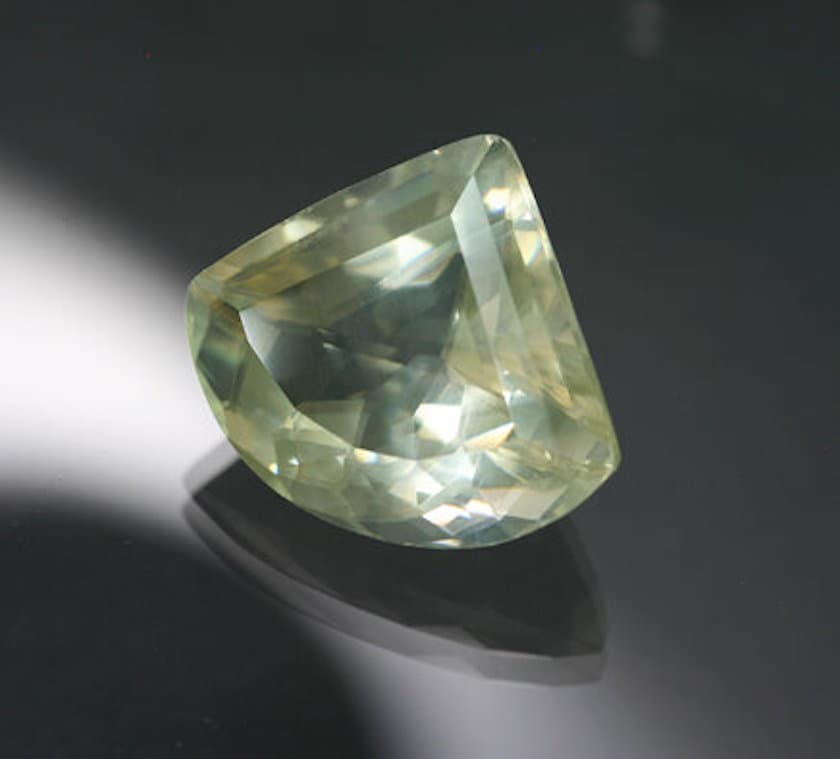Aragonite Value, Price, and Jewelry Information
Aragonite is more commonly found as a constituent of pearl and shell nacre than as a crystal suitable for gem cutting. Too soft for most jewelry use, a faceted aragonite would be a true collector's item.
1 Minute Read
Aragonite is more commonly found as a constituent of pearl and shell nacre than as a crystal suitable for gem cutting. Too soft for most jewelry use, a faceted aragonite would be a true collector’s item.
Start an IGS Membership today
for full access to our price guide (updated monthly).Aragonite Value
Comments
Aragonite and calcite are dimorphous or polymorphs. They share the same chemistry but have different crystal habits. While calcite is the most abundant and widespread carbonate mineral on Earth, aragonite is less so. Facetable aragonites are almost always very small, as opposed to calcites, which occur in huge, transparent masses or crystals. (Like calcites, aragonites have a high birefringence and will also show facet doubling).
Be aware that some people describe ammolite as aragonite. However, this mineral only constitutes a part (albeit major) of this fossilized shell gem material.
Identifying Characteristics
Luminescence
- Longwave: Pale rose, yellow, tan, green, rarely bluish; also may phosphoresce green (Sicily).
- Shortwave: Yellowish, pinkish-red, tan, and white; also pink (Sicily).
Enhancements
Heating to 400° C will convert aragonite into calcite. This occurs naturally over millions of years, but no commercial incentive exists to do this in a lab.
Sources
Notable gem sources include:
- Spain: Molina de Aragon, type locality, in stubby twinned crystals.
- Czech Republic: Bilin.
- Greece: Laurium, blue aragonite.
- Sicily: Agrigento, with sulfur crystals.
- Chile: blue material.
- Mexico: Guanajuato.
- United States: Many localities, including Colorado, New Mexico, South Dakota, and Virginia. California, Iowa, and Wyoming yield a fibrous variety.
- Austria; Germany; Namibia; Peru; Slovakia; United Kingdom.
Stone Sizes
Faceted gems are usually only a few carats and colorless, but the potential exists for much larger stones. The largest known cut specimen hails from Bilin, Czech Republic: a straw-yellow emerald-cut gem that weighs 110 carats.
Straw-yellow crystals from Horschenz, Germany have yielded stones up to 10 carats.
The Devonian Group in Calgary, Alberta, Canada holds a 7.85-ct stone from Germany.
Care
Aragonite's hardness is too low for this stone to be worn safely in jewelry. Avoid mechanical cleaning such as steam or ultrasonic processes. Instead, use a soft brush, mild detergent, and warm water for cleaning. Store your aragonites separately from other stones to avoid contact scratches. Consult our gemstone jewelry cleaning guide for more recommendations.
Joel E. Arem, Ph.D., FGA
Dr. Joel E. Arem has more than 60 years of experience in the world of gems and minerals. After obtaining his Ph.D. in Mineralogy from Harvard University, he has published numerous books that are still among the most widely used references and guidebooks on crystals, gems and minerals in the world.
Co-founder and President of numerous organizations, Dr. Arem has enjoyed a lifelong career in mineralogy and gemology. He has been a Smithsonian scientist and Curator, a consultant to many well-known companies and institutions, and a prolific author and speaker. Although his main activities have been as a gem cutter and dealer, his focus has always been education.
Donald Clark, CSM IMG
International Gem Society
Related Articles
A World of Crystals
Pyrrhotite Value, Price, and Jewelry Information
Gaylussite Value, Price, and Jewelry Information
Diamond Value, Price, and Jewelry Information
Never Stop Learning
When you join the IGS community, you get trusted diamond & gemstone information when you need it.
Get Gemology Insights
Get started with the International Gem Society’s free guide to gemstone identification. Join our weekly newsletter & get a free copy of the Gem ID Checklist!
